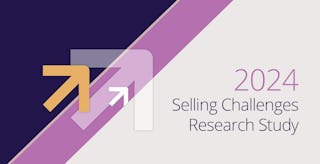Do’s and Don’ts of Sales Prospecting

During my 20 years in sales, I’ve seen more than enough examples of best practices, fair practices, and I-can’t-believe-it practices related to sales prospecting.
I’ve worked in technology sales, leading high-performance teams, and I’ve been responsible for generating engagement with clients who weren’t actively in partnership with me or my then-employer. Based on my experience, I’ve developed a short list of things that you should do to be effective in sales prospecting and, conversely, things not to do.
The Do's & Don'ts of Effective Sales Prospecting
DO: Be disciplined. If you are methodical in using a consistent process over time to contact prospects, you will be more successful with your prospecting. It is as simple as it sounds. Set aside a certain amount of time each week to reach out to prospects, be it an hour a day or a half-day each week. By scheduling the time, you can develop a rhythm that includes pre-call preparation and follow-through dedicated to specific clients.DO: Leverage your account-planning process. Specifically, use the process to understand two things about each targeted account: 1) What is relevant to that organization? What is happening internally and also within the industry? 2) What messaging can you put together that will resonate with those factors in mind? What this information will give you is a roadmap for how to prepare for your prospecting call.
DON’T: Lead with your product or capabilities. Your opening should focus on what’s happening in the prospect’s world. Only then can you begin to present your offerings as a solution to their challenges. When I led the healthcare service team for a technology company, we never called the compliance officer to talk about fax server integration within his/her network. Instead, we would ask how he/she was addressing the HIPAA Omnibus Rule and implementing an audit trail for patient health information. We might then offer to share how we’ve helped other clients deal with the same issue. Now we had the client’s attention, because we tapped into a relevant issue.
DO: Conduct due diligence on the front end so that you can tailor a message that resonates with the specific person you’re calling. On the healthcare services team mentioned earlier, we would not talk with the CFO about HIPAA Omnibus compliance. Rather, we would focus our conversation on ways to increase cash flow by reducing “days not final billed” in accounts receivable. This is a key measurement in billing efficiency within health systems: it is the time between patient discharge, coding of the chart, and final screen completion. The point was to bring insight into areas of relevance for each prospect, matching our message to what the client considered to be most important.
DON’T: Discount a prospect because the first call didn’t lead to an appointment. It can take several touch points before you earn the right to call on the prospect. Some sales teams conduct a calling blitz, where the success rate is based on a ratio of phone calls and appointments made during a specific period. Personally, I think it’s more important to measure the quality of calls, based on prospect engagement and positioning for follow-up dialogue, even if fewer appointments are scheduled.
There certainly are many more things that you can do to improve your sales prospecting approach, but these do’s and don’ts set a firm foundation. By adhering to a disciplined process and using account planning to inform your messaging, you are sure to improve your success rates in converting prospects into clients.
What are some of your do's and don'ts? Let us know!

Brief: Creating a Targeted Prospecting Strategy
DownloadGet industry insights and stay up to date, subscribe to our newsletter.
Joining our community gives you access to weekly thought leadership to help guide your planning for a training initiative, inform your sales strategy, and most importantly, improve your team's performance.






